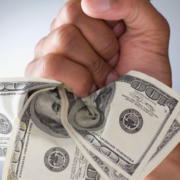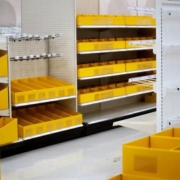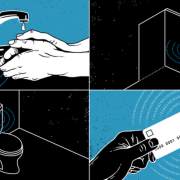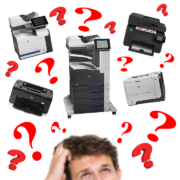Why it’s almost impossible to steal a Tesla (and get away with it)
New data suggests Tesla’s security checks to foil thieves are remarkably effective
Elon Musk said he wants to take Tesla private, but late Friday said he now believes it’s better for Tesla to remain a public company. “I knew the process of going private would be challenging, but it’s clear that it would be even more time-consuming and distracting than initially anticipated,” the company’s CEO wrote. While Musk is no longer determined to take Tesla private, there are people out there who still want to take your Tesla. They too find it challenging. Good news for those owners: Almost all stolen Teslas are eventually returned.
In 2011, only one Tesla TSLA, +1.72% had ever been stolen in the U.S. That was four years after Tesla produced its first model, the Tesla Roadster, and one year after the company went public. The number of these electric cars being stolen has steadily increased every year along with production: 6 in 2013, 15 in 2014, 9 in 2015, 28 in 2016, 57 in 2017 and 23 from January to May 2018. And yet almost every stolen Tesla over those years has been recovered — all except 3, including that sole Tesla stolen in 2011. (Tesla did not respond to request for comment.)
The recovery of stolen Teslas is notable in an industry where the overall recovery rate for stolen vehicles was just 58.4% in 2016. Tesla had a 100% recovery rate that year, thanks in part to its GPS tracking technology. “That’s about as good as it gets,” said Fank Scafidi, director of public affairs at the National Insurance Crime Bureau, which crunched the Federal Bureau of Investigation’s National Crime Information Center data. “I’m wondering if the thieves’ intellect might have been overwhelmed just sitting in a Tesla, much less figuring out how to operate it for any length of time.”
“The actual ability to get into a Tesla would be somewhat difficult as you’d have to hack your way in,” says Matt DeLorenzo, senior managing editor for Kelley Blue Book. “Most of the top 10 stolen vehicles in the U.S. tend to be mass-market models. They’re primarily stolen for body parts and air bags, and anything thieves can sell to service shops.” The more Teslas sold, he said, the more thieves will seek valuable spare parts. “It will be interesting to see what model becomes a hot commodity for thieves now that there are more Model 3 and Model Ss out there.”
The number of stolen Teslas in the U.S. has spiked in recent years, reaching an annual peak of 57 in 2017 (with all but one of those cars recovered) as the electric-car manufacturer has ramped up production. Tesla delivered 76,000 vehicles in 2016 and 103,000 in 2017. Last month, Tesla reported that it produced 53,339 vehicles in the second quarter alone and said it expects to make 6,000 Model 3s per week by late August. It delivered 28,578 Model 3s, compared to 24,761 Model S and Model X cars combined.
The recovery of stolen Teslas is notable in an industry where the recovery rate for stolen vehicles was 58.4% in 2016. Tesla had a 100% recovery rate that year.
There’s been a spate of “relay attacks” in recent years where thieves unlocked key fobs remotely. Last month, Tesla emailed customers to ask them to change their settings: “When enabled, our passive entry setting will automatically unlock the doors of your Model S when you approach it with your key. Relay attacks, a type of vehicle break-in that can be targeted at vehicles from many manufacturers including Tesla, allow an attacker to transmit a signal from your key in one location to your car in another location, thereby creating the potential for unauthorized access and entry.”
Tesla’s remote software updates have aimed to keep pace with its increasingly prolific production line. It’s no mean feat to get a stolen Tesla across state lines or even spirit it out of the country, DeLorenzo said. “You have to be able to recharge the car,” he added, “and you need pin numbers.” The thief would also need to stop at a recharging station, which are concentrated along the east and west coasts. “As time goes on, the value of Tesla parts the value will go up exponentially,” he added. But, just like tracing an iPhone, he expects Tesla’s GPS technology to keep track of them too.

Tesla’s not alone. OnStar, a subsidiary of General Motors GM, +2.32% has assisted police with 100,000 stolen vehicles since 1996, although it can’t say for sure that all of those cars were recovered. In 2008, it introduced a feature that remotely slows down a stolen vehicle in a high-speed car chase. “A lot of thieves don’t know this technology is in our vehicles, so I can imagine their faces when the car starts to slow down,” said Stefan Cross, a spokesman for General Motors. “It’s been used about a 1,000 times since the launch and we’re averaging 22 a month right now.”
Stealing automobiles remains a big business in the U.S. The National Highway Traffic Safety Administration estimates the value of stolen vehicles at $6 billion, up from $4.5 billion in 2014. It says a motor vehicle is stolen every 41 seconds.The most popular vehicle parts and items range from doors, engines, transmissions and GPS units to cell phones, iPads and laptops. More than 765,000 cars are stolen each year, down from nearly a million vehicles a year a decade ago, thanks in a large part due the key fob technology that makes cars increasingly difficult to break into.












